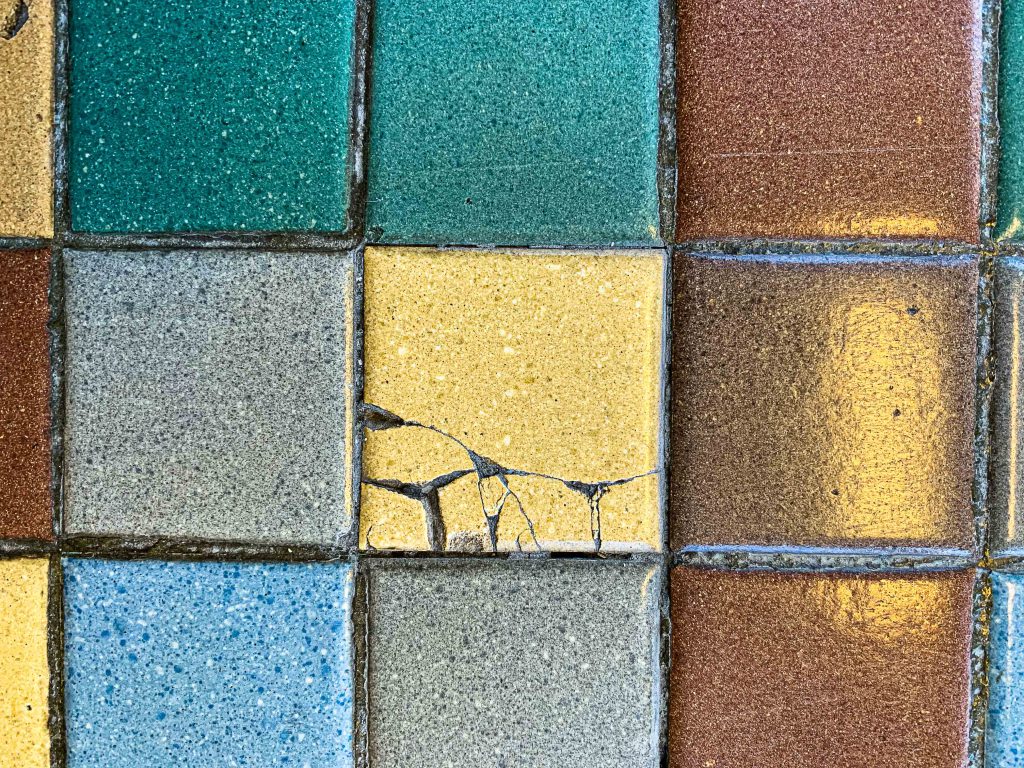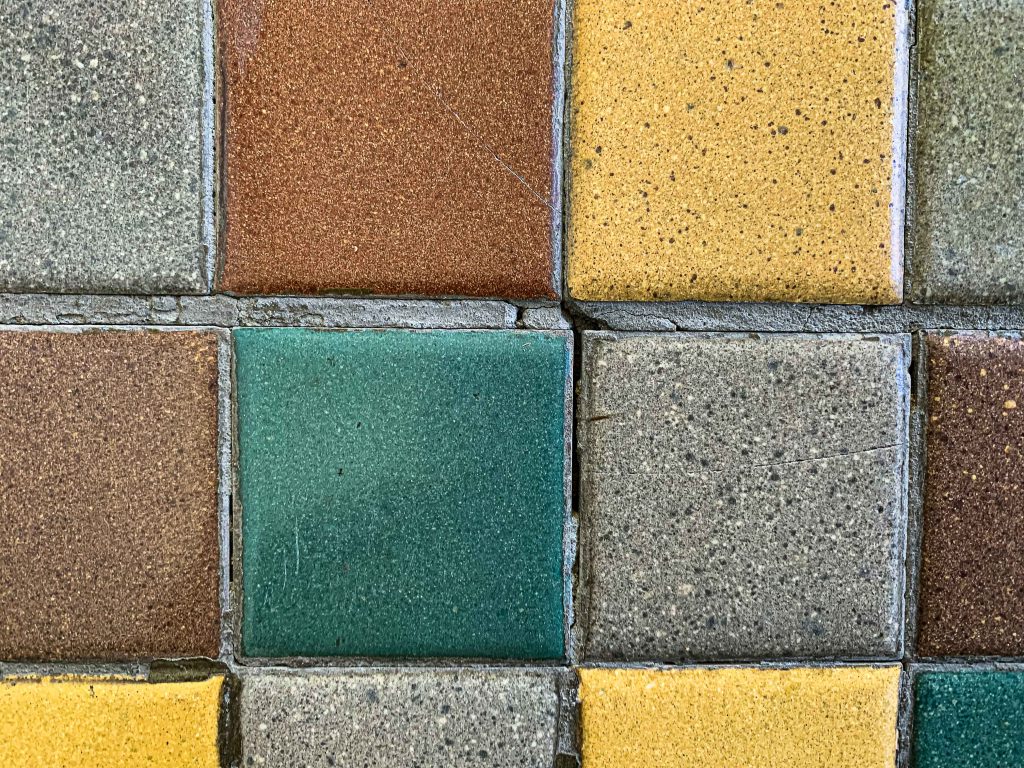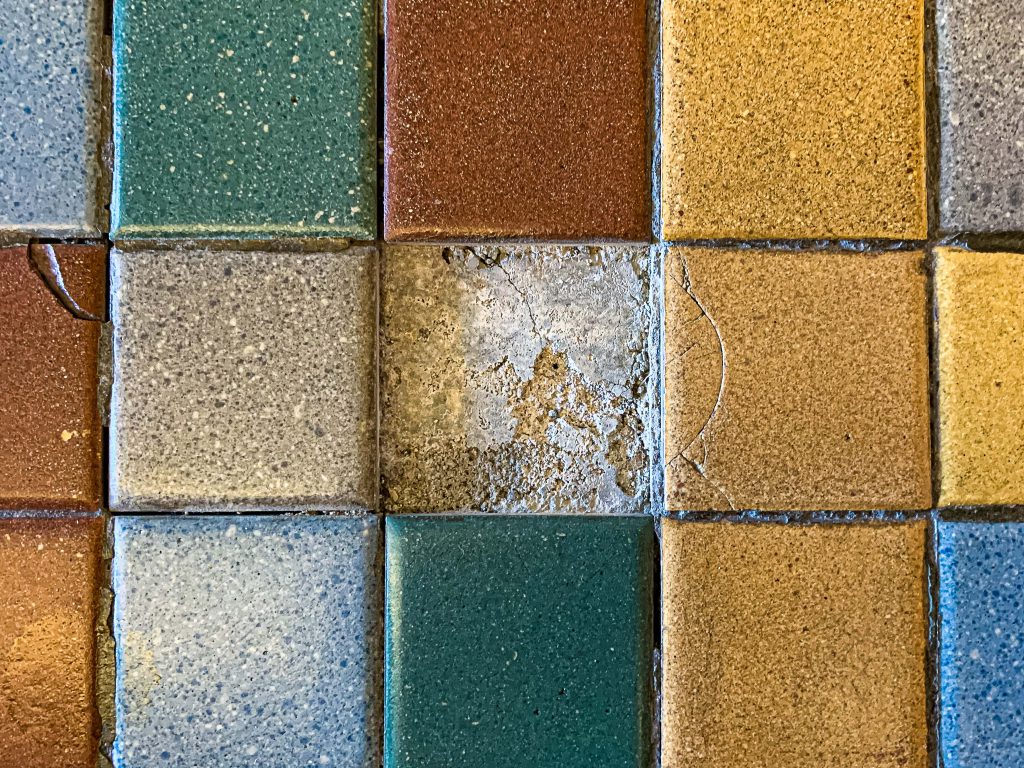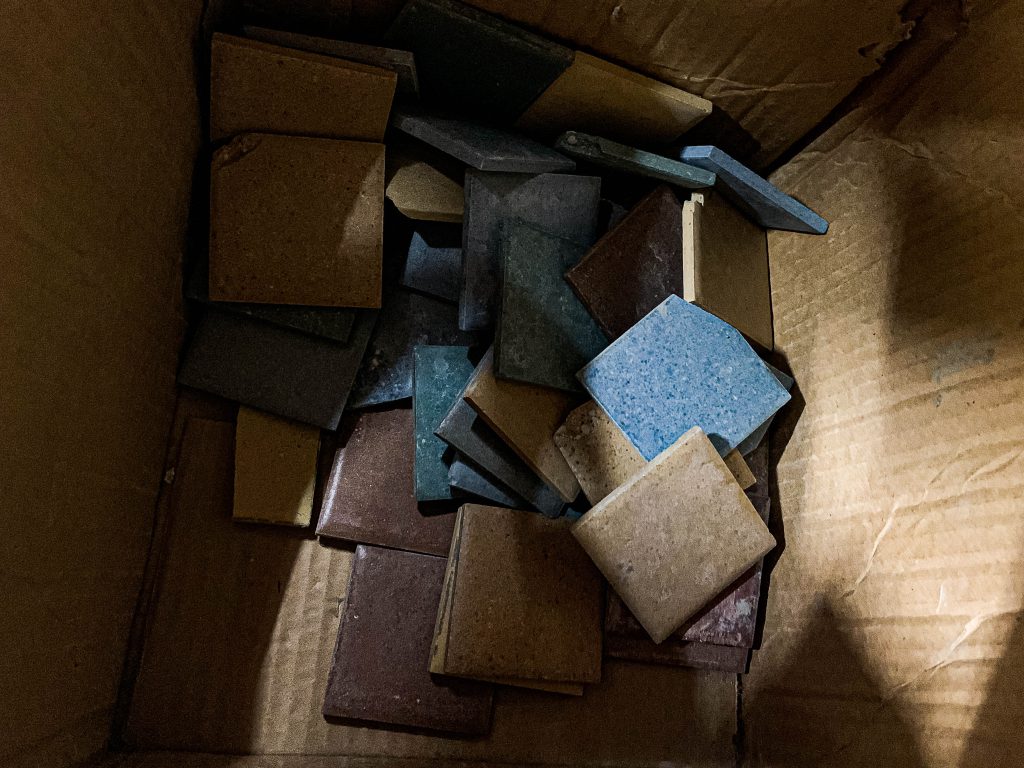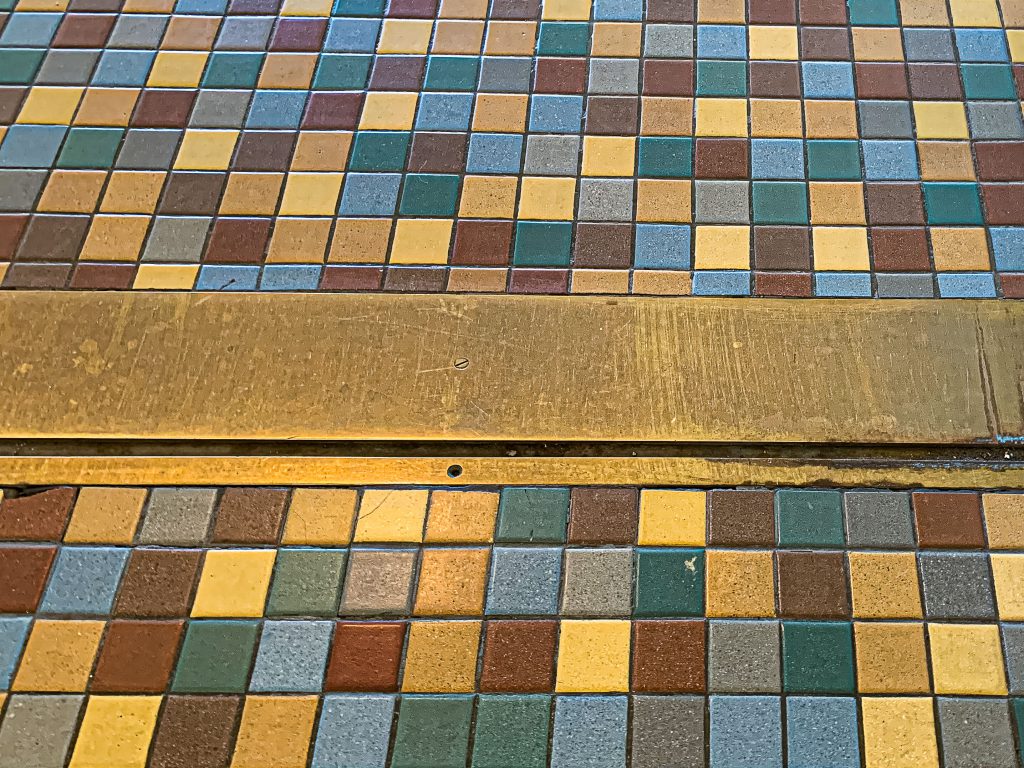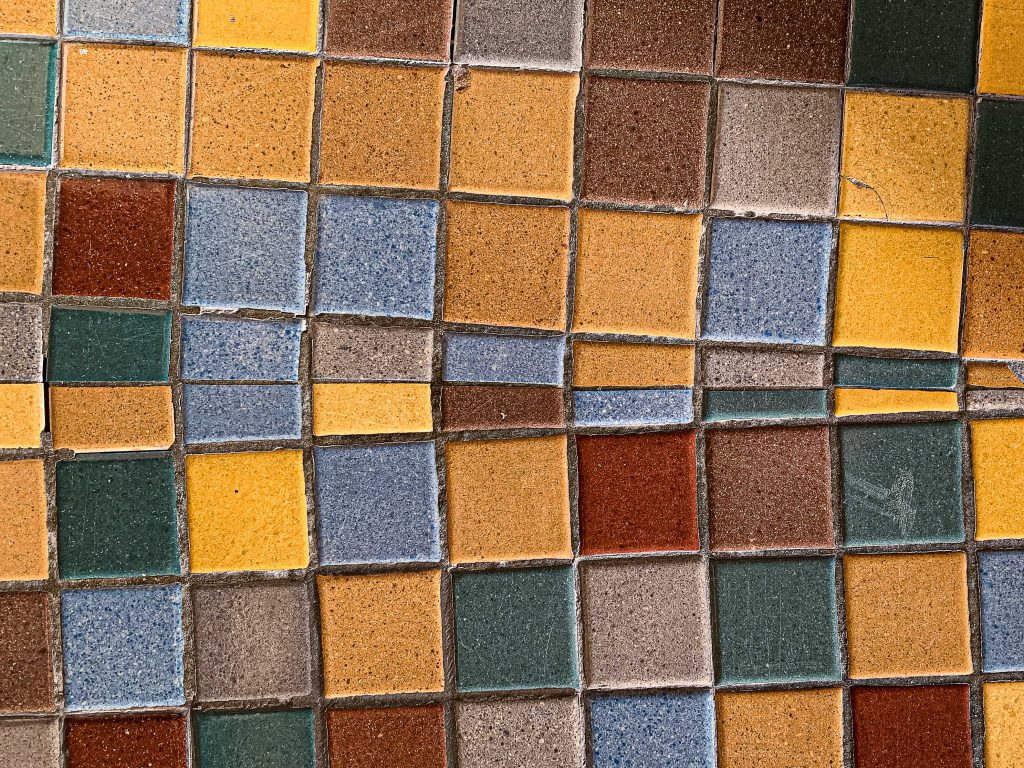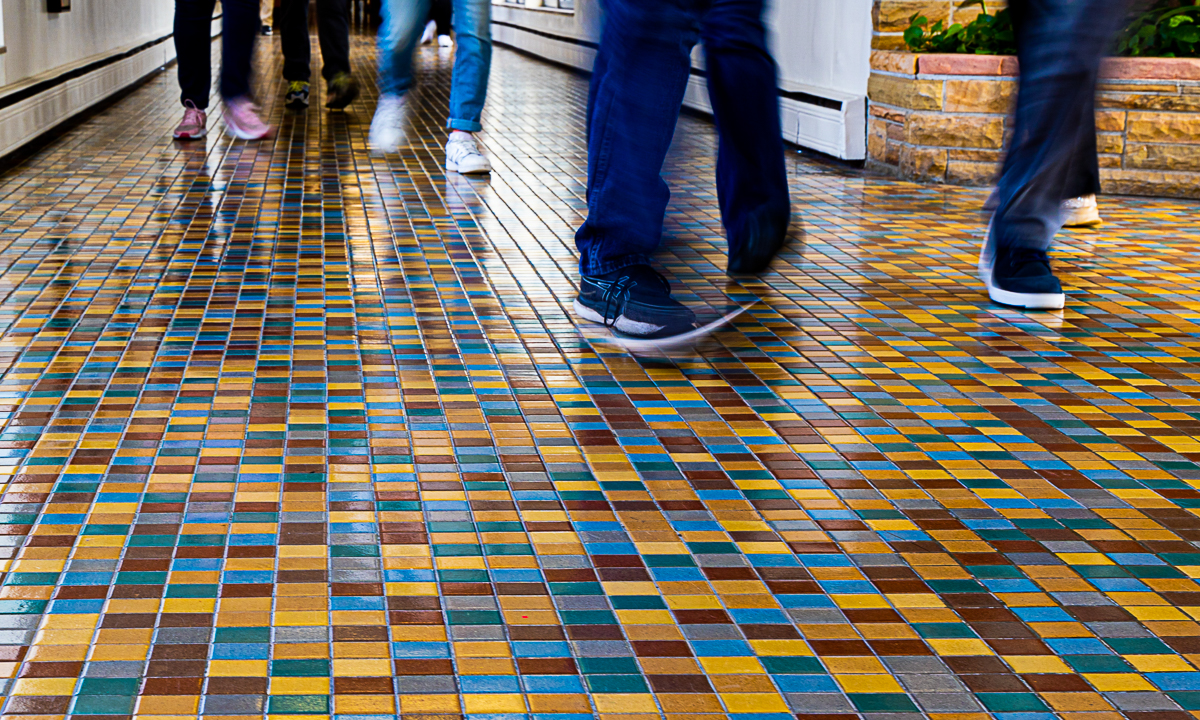
Or, “How many iconic Concordia floor tiles does it take to cover the original hallways of our beloved CUW campus?”
According to my golf rangefinder, it’s 135 yards (or 405 feet) from the Welcome Center, where the tiles start, down the hallway to the Loeber Hall doorway to the west. According to my yardstick, this hallway is approximately 8 feet wide. This means about 3,240 square feet of flooring is covered in little square tiles. Each tile, including half the mortar, is ~2.25 inches on each side., or 5.0625 in2. That’s 28.444 tiles per ft2, which adds up to more than 92,000 individual tiles. In just this one hallway.
If you multiply that figure by the total square footage of tiled hallway at CUW, you get … let’s see … times the hypotenuse … carry the 1 … a little over a bazillion. Truth is, I don’t know how many square feet there are—but there are a lot of tiles. Probably somewhere south of a million—but not too far south!
Square dealings
Like painting the Golden Gate Bridge (which never stops), keeping all the tile repaired is an ongoing challenge. Given as they were first installed in 1958, that means the tiles are 65 years old in 2023! That’s a lot of wear and tear in six-and-a-half decades. (Concordia moved to its present location in 1983.)
They break down in different ways, said Steve Hibbard, director of buildings and grounds at CUW. The primary problem is that the subfloor materials wears out and turns powdery over time, and the tiles lose their connection to the floor beneath. You can hear this effect sometimes when you walk down the hallways, particularly with hard-soled shoes. “You can tell by the sound which part of the floor is going to come loose next,” he explained.
The expanding and contracting of the flooring within and between all the different buildings is also a factor. Those brass strips you see separating some of the hallways are actually expansions joints, designed to absorb some of the changes, add a little flexibility, and minimize the damage.
In most cases, individual tiles, or small groups, will crack or come loose. “But sometimes you’ll get a whole section of floor that will just kind of pop,” Hibbard said.
All squared away
One big problem with keeping them repaired is that these tiles have become difficult to source. For one, small tiles these days typically come in a pre-laid webbing, to make installation much quicker and easier. Another challenge is that the tiles, as noted above, don’t necessarily have a standard size. Finding individual tiles that fit is problematic.
That means that tiles are reused as often as possible. Recycled tiles become available when tiles are removed, such as to install carpet in a residence hall, or install more modern, lower-maintenance flooring material.
“We carpeted Heidelberg one of my first years here, and that was a mistake,” Hibbard says. “We installed it over the tiles, but that didn’t stop the tiles from loosening. After a while, you could hear them crunching underneath.”
So now the tiles are removed before any carpeting is installed. But it’s hard to remove them in one piece. They also come up with a lot of mortar and grout stuck to them. They have to be cleaned up before they can be reused.
“When I first started here,” Hibbard recalled, “they used to soak old tile in some sort of solution to help remove the old mortar so they could be used again. But now we just use a grinder to mechanically clean them up.”
As you can imagine, it’s not a simple or easy job—especially when you consider that some of the tiles are not even exactly the same size.
Wittenberg Hall was the last building completed—they were built generally from east to west, Hibbard said. Because so many tiles were needed, some of the floors toward Wittenberg don’t quite match the others. They are a tiny bit bigger and have a slightly different pattern. This just adds to the overall maintenance challenge.

Tile tidbits
- Laying all the floor tiles for all the original buildings took three years to complete.
- Years ago, one man on the maintenance crew was known in particular for taking care of the tile, Hibbard said. “Big Gene,” they called him, a testament to his height, which Hibbard estimates at 6’-5” or more. He could frequently be found lying on the floor working on the tile. When he retired, Jeff Shawan, associate professor of art at CUW, created a unique tile-based work of art to present to him and commemorate his years of service.
- These days, Chris Wach, maintenance tech-carpenter with Building and Grounds, bears primary responsibility for keeping up with tile maintenance. He has a standing work order to fix tile forever. (If you see him working in the hallway, feel free to express your appreciation!)
- One downside of the tiles is how noisy the rough surface can be. If you’ve ever been in class or in Chapel when someone pushes a metal cart down a tiled hallway right outside the door, you know what we’re talking about!
- It’s difficult to say just how many different colors are used. Upon examination, you’ll see different shades of rust, gray, yellow, blue, and green—and more! There’s no pattern to how they are positioned; it’s all completely random.
- The colors of the tiles have influenced many of the paint color choices throughout campus.
Square roots
It would be tempting to say that the tiles aren’t worth the trouble. Tiles continue to wear out and break, and Hibbard said the stockpile of reusable tile is running short. But the multi-colored mosaic of our flooring has become a part of the lore surrounding Concordia’s rich history. The tiles are a connection to and a reminder of God’s amazing provision when this beautiful campus came into our possession. They’re not going away any time soon!
“Over the years I’m finding there’s more interest in the tile than when I first started here,” Hibbard said. More people say, ‘Oh, these are kind of cool!’ And some of the tiled hallways are disappearing, so there’s a desire to keep the tiles as long as possible.
“I’ve been reaching out to some companies to see if we can still get that tile, and I think we should be able to,” he adds. “I haven’t found a source just yet—but we’re not giving up!”
Want in?
Concordia University Wisconsin is a Lutheran higher education community committed to helping students develop in mind, body, and spirit for service to Christ in the Church and the world. Our vision is to be well known nationally and internationally as a premier Lutheran Christian university, widely recognized for meaningful integration of faith and learning. To learn more or to apply, visit cuw.edu or click the link below.
